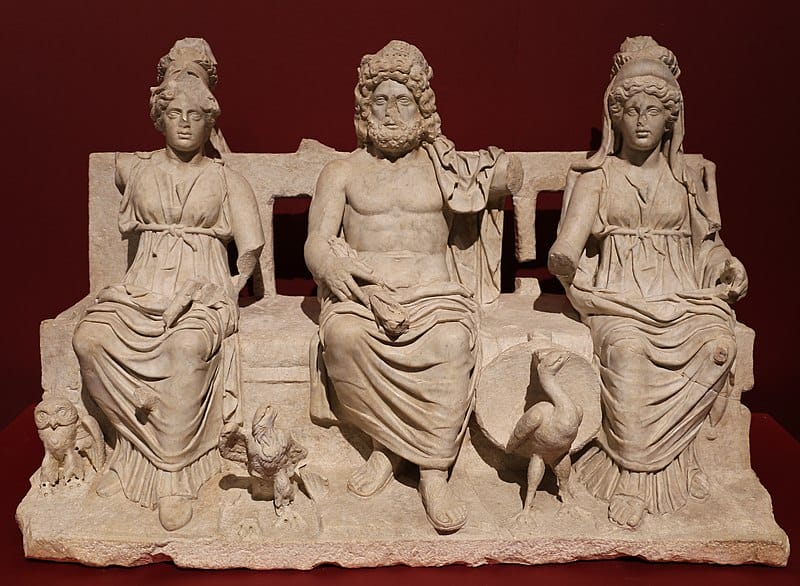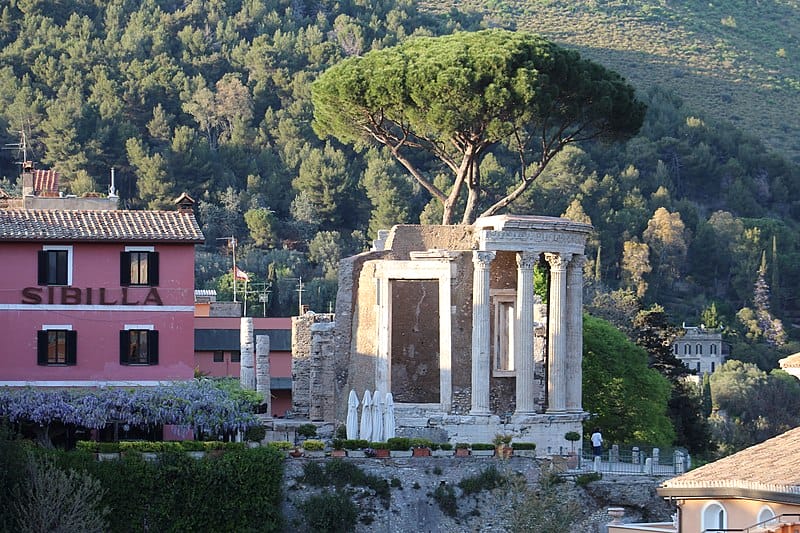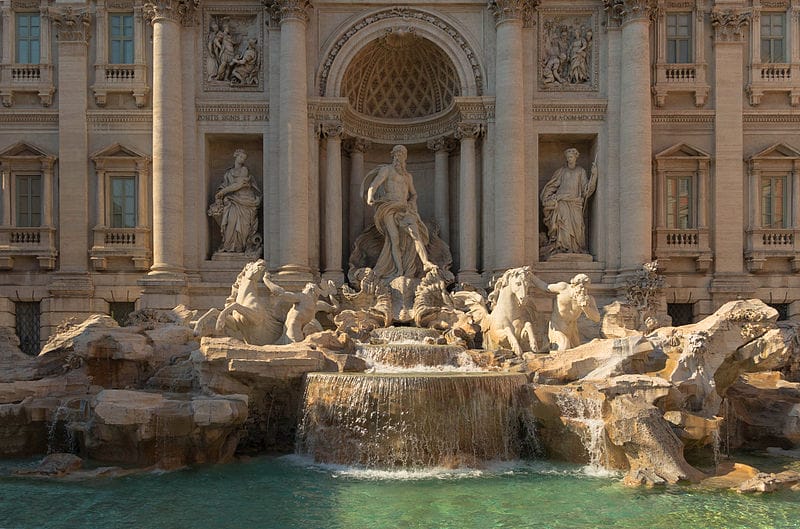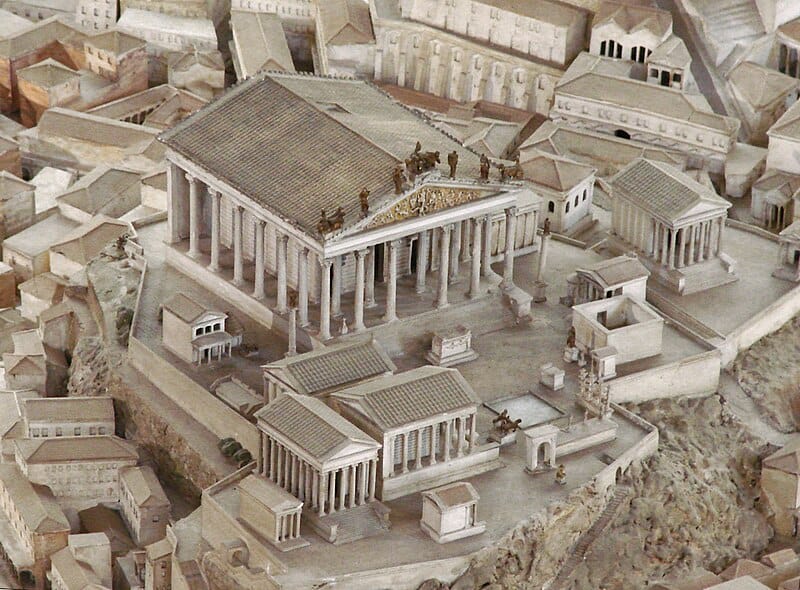Roman mythology and legends are fascinating topics that have captivated people’s imagination for centuries. These legends are shown in books, movies, and games even today. They offer a window into the beliefs of ancient Rome and by doing that, they have influenced art, literature, and culture. From the founding of Rome by the mythical brothers Romulus and Remus to the gods and goddesses that were worshipped by the ancient Romans, the stories of Roman mythology offer variety of topics.

Source: Sailko, CC BY 3.0 https://creativecommons.org/licenses/by/3.0, via Wikimedia Commons
The Roman mythology is tied to the early days of the city of Rome. And even before, since many of these stories are similar to the ones of ancient Greece. As the city grew, so did Roman mythology, with new gods and goddesses. And many of the stories got new versions, different from the old ones. These stories were passed down through generations and were eventually written down by ancient Roman writers such as Ovid and Virgil.
Today, visitors to Rome can still see the influence of these myths and legends throughout the city. From the Colosseum, where the story of Romulus and Remus is said to have taken place, to the Pantheon, which was dedicated to the gods of Rome, the architecture and landmarks of the city are steeped in history and mythology. Now, let’s start the journey through Rome and famous landmarks. Also, let’s find out more about the mythical stories connected with these landmarks.
Key Takeaways
- Cultural Significance: Roman mythology is deeply rooted in the culture and identity of ancient Rome, shaping its values and beliefs.
- Influence of Greek and Etruscan Myths: Roman myths were influenced by Greek and Etruscan stories but were uniquely adapted to reflect Roman ideals.
- Mythological Landmarks: Iconic sites like the Pantheon, Colosseum, and Capitoline Hill have strong ties to Roman myths, symbolizing the city’s religious and cultural heritage.Roman Mythology: The Roots of Rome’s Famous Landmarks
The Myths of Romulus and Remus
Romulus and Remus: Founders of Rome
Every mythology is a collection of stories and beliefs used to explain the world, and Roman mythology was no exception. In many civilizations, the God of thunder was the supreme one, and in Rome, the supreme story is about the foundation of the city. The one where it all started. After all, the supreme one for Romans was their city itself.
The founding myths of Rome are among the most well-known stories in every mythology overall. According to legend, the city of Rome was founded in 753 BC by Romulus and Remus, who were twin brothers. They were the sons of the god Mars and a vestal virgin named Rhea Silvia. The king of Alba Longa, brother of their grandfather, fearing that the boys would one day overthrow him, ordered them to be thrown into the Tiber River.

Although this article is about the connection of famous landmarks of Rome and the famous story from the history of the Eternal City, we won’t connect it with one specific landmark. The whole city is a testimony to Romulus and Remus and everything around their lives.
The Roman Forum and the Sacred Flame of Vesta
Now, let’s go to the historical center of the city. The Roman Forum was the center of all the activities during all the eras in Rome. A marketplace surrounded by temples, basilicas, and government buildings. The Forum attracted all the important people. But there was one special building that connected the Roman Forum with one story. And that building was the Temple of Vesta, which housed the Sacred Flame of Vesta.
The Sacred Flame of Vesta was a flame that was kept burning by the Vestal Virgins. They were a group of priestesses who were chosen as children and served for thirty years. The flame represented the hearth of the goddess Vesta, patron of the home and family.
These priestesses were highly respected with many privileges, but they also had strict rules to follow, with possible severe punishments. They were not allowed to marry or have children, and if they broke their vow of chastity, they would be buried alive, a gruesome death. Since they were responsible for keeping the flame burning, they were responsible for Rome’s destiny. The story says that if the flame ever went out, it was believed to be a bad omen for Rome.

The Temple itself was a beautiful round building with a roof covered in bronze. The center of the inside of the building was an altar where offerings were made to the goddess. There was also money since the temple was used as a treasury.
The Pantheon and the Gods of Rome
One of the most obvious connections is the one between the Pantheon and the gods of ancient Rome since it was a building dedicated to them. The name “Pantheon” itself is taken from the Greek words “pan” (meaning all) and “theos” (meaning gods), signifying a temple for all the gods. This connection is a key to the very existence of the building.
It was built by Emperor Hadrian in 125 AD. Although Christianity in the Middle Ages wasn’t very forgiving to the other religious buildings, the Pantheon is still considered one of the best-preserved ancient buildings in Rome. The temple’s concrete dome still stands today.
Roman mythology had many gods and they were there to explain everything. And the most important gods were Jupiter – the king of the gods; Mars – the god of war; and Venus – the goddess of love and beauty. Some other important gods were Neptune, the god of the sea, and Apollo, the god of music, poetry, and prophecy. It is easy to deduce that many of these gods have roots in Greek mythology. These gods were often associated with specific objects or living beings. Jupiter was associated with the eagle, Mars with the wolf, and Venus with the dove.

The Trevi Fountain and the Legend of the Maiden
The Trevi Fountain is probably the most famous tourist attraction in Rome. Although it isn’t connected to Ancient Rome the fountain found its place on this list because of a story connected to it. Designed by Italian architect Nicola Salvi, it was completed by Giuseppe Pannini in the 18th century. The fountain is known for its sculptures and its association with the legend of the Maiden. Also, it is the most familiar with wishing luck and throwing coins inside of it.
As the story says, the fountain was built on the place where a young girl revealed the source of a water spring to Roman soldiers in the 1st century BC. Some say that this spring was even blessed by the gods, and the girl itself was their messenger. The soldiers built a fountain to honor the girl and the spring.

The fountain today is a landmark used for everything. From the meeting place to the end of hiking tours, the Trevi fountain was also a place to enjoy art and marvelous sculptures. One of the most important sculptures includes Oceanus, the god of the sea, and his tritons. But the central one is of Neptune who is riding a chariot pulled by seahorses. Some of the sculptures were added later, especially during the Renaissance, but they blend perfectly with the ones before.
The Capitoline Hill and the Myth of Jupiter Optimus Maximus
The Capitoline Hill is one of the seven hills of Rome, many even say that it is the most sacred hill in ancient Rome. No other hill was home to many important temples and the place of many significant events in Roman history. One of the most important temples and one connected with the very important myth, is the Temple of Jupiter Optimus Maximus.

Source: Jean-Pierre Dalbéra from Paris, France, CC BY 2.0 https://creativecommons.org/licenses/by/2.0, via Wikimedia Commons
As stated before, Jupiter Optimus Maximus was the king of the Roman god. Logically, he was considered the most powerful of all the gods. And the most important god deserves a very important temple. Besides religious purposes, this temple was the site where emperors were inaugurated. Yes, with Jupiter Optimus Maximus as the witness.
If we listen to the mythological stories, Jupiter was born on Capitoline Hill and this myth also helped to establish the importance of the hill in Roman religion. Important battles also made the significance of the hill even bigger, and that is why it was considered a symbol of Roman strength and power.
The myth of Jupiter Optimus Maximus played an important role in Roman imperial ideology. The emperor was seen as the representative of Jupiter on Earth. The temple was a symbol of the emperor’s power and authority and was used to legitimize his rule.
People Also Ask:
Who are the major deities in Roman mythology?
The major deities in Roman mythology are Jupiter, Juno, and Minerva, who are considered the three most important gods. Other major gods include Mars, Apollo, Venus, and Mercury.
What are some iconic stories from Roman mythology?
Some of the most iconic stories from Roman mythology include the story of Romulus and Remus, the founding of Rome, and the story of Aeneas, who was believed to be the ancestor of the Roman people. Other well-known Roman mythology stories include the twelve labors of Hercules and the myth of Cupid and Psyche.
What does Roman mythology explain?
To the Greeks and the Romans, myths explained who they were as a people and gave them a sense of national pride, an understanding of valor and honor, and insight into their destiny.
What creatures are unique to Roman mythological tales?
There are several creatures that are unique to Roman mythological tales, including the Lares, who were household gods, and the Penates, who were gods of the pantry. Additionally, the Roman god Saturn was often depicted with a sickle, which became associated with the Grim Reaper in later folklore.
What are the origins of Roman mythology?
Many of the stories and beliefs associated with Roman mythology were adapted from earlier Etruscan and Greek mythology. Additionally, many of the myths in Roman mythology were created to explain natural phenomena or historical events.
Is Roman mythology the same as Greek?
Although Greek Gods are arguably better known, Greek and Roman mythology often have the same Gods with different names because many Roman Gods are borrowed from Greek mythology, often with different traits. For example, Cupid is the Roman god of love, and Eros is the Greek god of love.
Hello, my name is Vladimir, and I am a part of the Roman-empire writing team.
I am a historian, and history is an integral part of my life.
To be honest, while I was in school, I didn’t like history so how did I end up studying it? Well, for that, I have to thank history-based strategy PC games. Thank you so much, Europa Universalis IV, and thank you, Medieval Total War.
Since games made me fall in love with history, I completed bachelor studies at Filozofski Fakultet Niš, a part of the University of Niš. My bachelor’s thesis was about Julis Caesar. Soon, I completed my master’s studies at the same university.
For years now, I have been working as a teacher in a local elementary school, but my passion for writing isn’t fulfilled, so I decided to pursue that ambition online. There were a few gigs, but most of them were not history-related.
Then I stumbled upon roman-empire.com, and now I am a part of something bigger. No, I am not a part of the ancient Roman Empire but of a creative writing team where I have the freedom to write about whatever I want. Yes, even about Star Wars. Stay tuned for that.
Anyway, I am better at writing about Rome than writing about me. But if you would like to contact me for any reason, you can do it at [email protected]. Except for negative reviews, of course. 😀
Kind regards,
Vladimir
